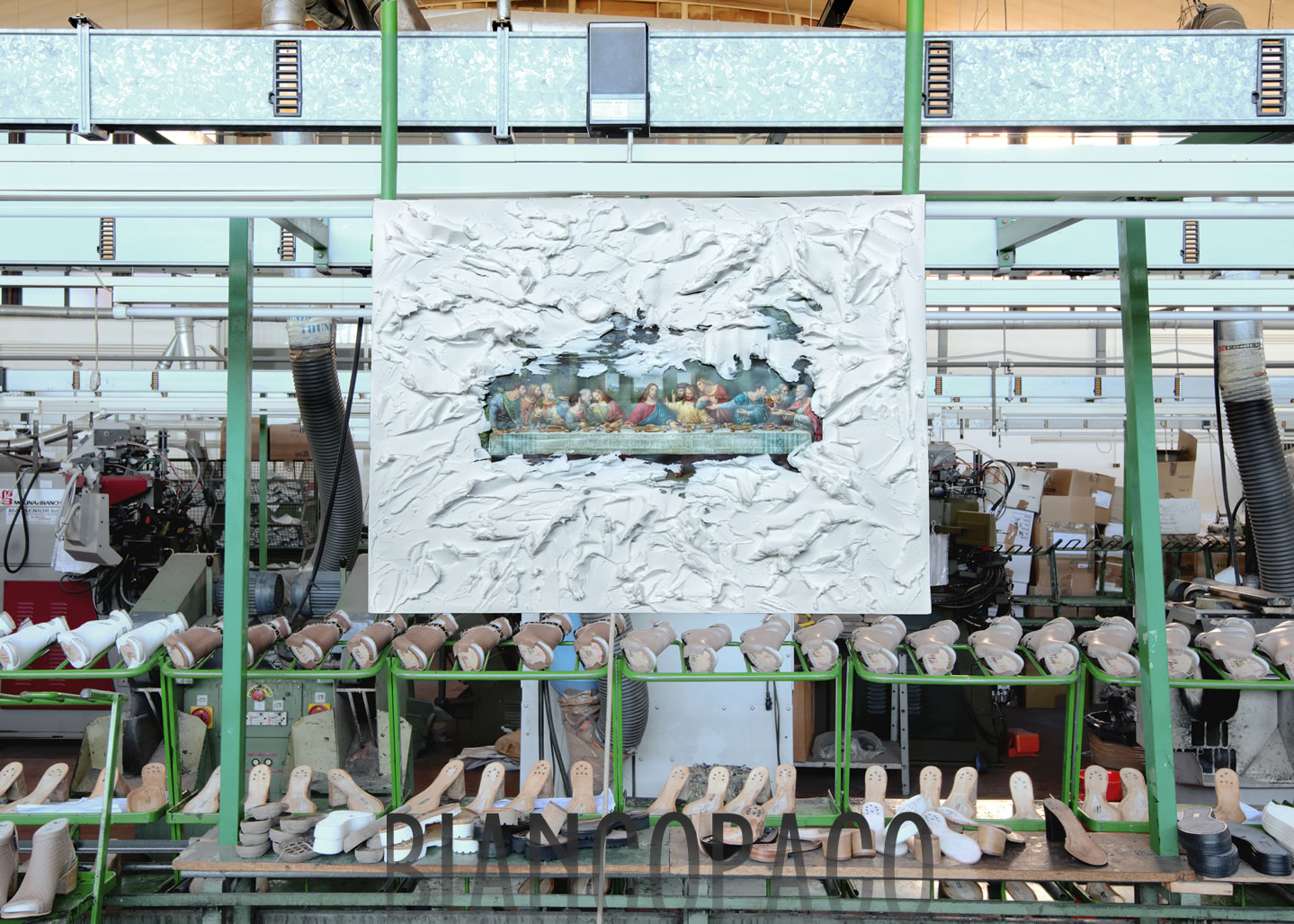Biancopaco: looking for an alter ego for Saint John the Apostle

In the beginning was Word – so is written in the prologue of the Gospel of John. How many words do we need to clarify what is art’s role in this world?
He (John) came to be a witness, to tell people about the light, so that all might believe through him – the Gospel follows. Opting for light to be the most faithful description of life, he’s suggesting that the key is not to be found in the Word, but in Colour.
Those who write use metaphors to be able to express the deepest emotions, and I like to say that certain things should be understood, or at least grasped, by comparison and not by definition, as the latter can be used to communicate and not to feel. I certainly understand that it is a long shot to introduce this subject by starting from “creation”, but overall I believe that passage was the first documented source where someone has tried to express an incredibly deep emotion using a term that is closer to colour than definition. I tell myself, there must be a reason.
As art can be seen as a media, painting describes a parallel world that is bound to the most sensitive souls to experience for as long as needed, in such a way to provide the artist the framework onto which he can build his own creation. Biancopaco carries within himself the colour of white, the colour of light and beginning. Nowadays do we need a new beginning? Do we need to shred the paper since the letter we’re writing is too ugly or inadequate? Do we want to overwrite a file that we just updated while the old version is still incomplete? Heavens, how white is so important. Now I can understand Saint John a bit more.
Perhaps (or maybe not) Luca Colapietro – alias Biancopanco – disgusted (rightly or wrongly) by what he had done, wanted to draw a white veil to begin anew and paint something that could be considered pure. Or perhaps we could see all this matter from another point of view. What if divinity itself wanted to withdraw into a white candid wall to find protection from what it witnessed? Is it because the work of man? Retracing to Saint John, there is the need for someone to bear witness to the alienation of the deity towards what it sees. If it is God’s purpose, he for whom all exists, to dissociate us, it means we did much wrong.
We can measure the power of this interpretation by looking at the images found in Colapietro’s paintings about the footwear factory. This God, witnessing the cage that man himself has created, wants to hide beneath a brush of white that disinfects the eyes: the industrial mechanism that requires men to work for forty years for someone else’s benefit, just for him to be able to buy material goods or worse. Maybe if mankind could be reborn with today’s conscience it could make different choices, but how to be sure? Man is whom stands beneath the light while being affected by it. What kind of light and how many facets it owns is what remains to be answered.
link: ITHE WAY OF THE ART


